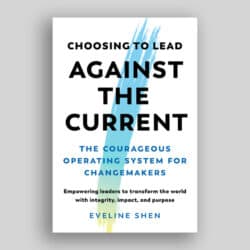While many charities and foundations have made commitments to anti-racism, this insider’s look at the sector tells a different story of how systemic anti-Blackness, along with gender, religious, and other forms of discrimination, affects who gets funded and the well-being of the sector’s workers.
Chantal had been working at a Canadian foundation for about a month when she was asked to sit in on a volunteer committee’s grantmaking decision process, where the volunteers reviewed applications that had been shortlisted by staff members. The volunteers “over-scrutinized the applications from Black-led organizations,” Chantal said. “It felt like they were searching for things that were wrong.” Multiple staff members came away from the meeting with concerns, which led to a review of evaluations from the previous few years. The review indicated that Black-led organizations were consistently scored more harshly – noticeably so. This finding was not shared with the volunteer committee. Instead, the scoring system was modified slightly and it became the responsibility of staff members, like Chantal, to incorporate anti-bias education into volunteer committee training.
A few years later, Chantal (not her real name) says she still has concerns about how grant applications from organizations led by Black and Indigenous people, and other equity-seeking groups, are reviewed. Although there are no longer legal restrictions on advocacy for charities, she and her team were instructed to search applicants’ social media channels for content that might be deemed political. Staff members were then expected to evaluate whether the social media content’s tone was respectful or “aggressive.” Chantal says this new process troubled her, noting that Black people are commonly stereotyped as being too aggressive. As Chantal described other practices and situations that concerned her at work, she said it was not possible to take everything on: “It’s like trying to predict scenarios and put out fires.” She told me that workplace stress led to her taking a health leave.
While many charities and foundations, particularly in the last year, have communicated commitments to anti-racism, stories like Chantal’s are not rare. In fact, I have heard several stories of how systemic anti-Blackness, in combination with gender, religious, and other forms of discrimination, affects who receives grants and the well-being of staff within foundations. I spoke to several Black workers in the philanthropic sector whose stories and insights shed light on the problems contributing to the systemic underfunding of Black-led organizations. To avoid risking these individuals’ careers, no real names have been used in this article.
Toward the end of last year, a research report called Unfunded: Black Communities Overlooked by Canadian Philanthropy indicated that just 0.03% of funding from major philanthropic foundations went to Black-led organizations in 2017 and 2018. Subjects interviewed for the report (who included Black and non-Black philanthropic, charity, and university leaders from across Canada) highlighted several potential contributing problems, including systemic barriers to grants, anti-Blackness, and a lack of representation in foundations. This gap in representation has come up several times in recent months, including when organizations such as Operation Black Vote, the Somali Centre for Family Services, and Black Lives Matter Canada were denied government funding and told they did not have sufficient Black leadership – when their leaders were exclusively Black. Community members later questioned whether any Black people had sat at these funding tables. Meanwhile, recent Statistics Canada data indicates a significant under-representation of “visible minorities” on charity boards, at 11%.
And while foundations and charities increasingly seek to enhance representation, that does not mean they are engaging individuals who want to challenge the status quo. Nor does it mean they are necessarily engaging Black people, who likely make up a small fraction of the aforementioned 11%. A recent Rotman report on diversity in charity boards indicated that little thought is given to why charities should diversify, beyond the optics. Another resource, Grantmaking with a Racial Justice Lens, states that when Black, Indigenous, or racialized staff are hired, it is not necessarily those with a commitment to racial justice. Seeking to simply look more diverse rather than hiring individuals who have the skills, track record, and commitment to advancing equitable outcomes can mean masking, rather than addressing, problems.
In addition, while the presence of Black, Indigenous, and racialized staff members may improve an organization’s optics, those workers’ heightened visibility within the organization can make them targets. In this way, the philanthropic sector can fall short when it comes to ensuring that progressive Black leaders both arrive at grantmaking decision tables and can stay at those tables, without the harm experienced by workers like Chantal.
Like Chantal, Jai also spoke about the challenges work posed to their well-being. “I felt complete isolation at work,” they said. “I was constantly misgendered and at times mistaken for other Black people.” Jai received pushback when seeking to support changes, including modifying communications from the foundation to be more gender inclusive. Working from home during the pandemic was a welcome escape from daily racial and gender discrimination, they said.
Another worker described discriminatory hiring processes at her foundation. While participating in a hiring decision with a colleague and her CEO, Zeinab’s opinion on who was best suited to the role – based on professional experience, skills, and lived experience – differed from that of her colleagues. Her CEO asked if it was a risk to hire another Muslim person (Zeinab and one of her colleagues at the time are Muslim). Another colleague involved in hiring added that it might result in an overrepresentation of Muslims. He suggested it might be an asset to hire a candidate who did not seem to be Muslim, implying they could be more objective or bring approaches to the work that the Muslim workers could not.
It had been suggested to Zeinab previously that friendships with applicants were clouding her judgment in grantmaking – where she had no personal relationships with the applicants but simply shared a religious background. She saw no evidence that her white colleagues experienced this type of scrutiny. When she addressed these situations, Zeinab said her colleagues usually agreed that their comments and behaviours were discriminatory. Following the hiring incident, she pointed out that it was part of a pattern and that an intervention, one looking at discrimination in HR practices and grantmaking and which the organization did not have the internal capacity for, was required. “Despite acknowledging racism and discrimination,” Zeinab said, “my request to engage someone with the expertise to create a safer workplace and more equitable granting processes was rejected.”
Some workers talked about the conflict they felt between wanting to escape a challenging work environment and wanting to advocate for better outcomes for grantees. “It’s exhausting, and especially isolating if you’re the only Black person, but it’s hard to leave because I also want to see our communities served,” Vanessa said. She has worked with a few foundations and feels not enough is being done to build relationships and ensure Black-led organizations are connected to grant opportunities. She highlighted a need to advocate against systemic barriers, such as restrictions to fund only organizations that are registered charities, a status that can be difficult to obtain. Vanessa said that requirement frequently leads Black organizations to partner with white-led charities, “who could pocket even 15% of the grant.” These white-led charities would also have “direction and control” over projects, including intellectual ownership, a reality Senator Ratna Omidvar described as racist and colonial in a private member’s bill she recently introduced to change the rules.
At a different grantmaking organization, Maya saw shifts in granting priorities that disproportionately negatively affected smaller organizations serving marginalized communities, including projects focused on Black newcomers in a stream she oversaw, which shrank over the course of her tenure. “There were programs I felt like I had to save from the chopping block,” she said. One program, which she said had a strong, positive impact in the community, stopped receiving funding shortly after she moved out of the role. The move toward supporting well-resourced, larger-scale initiatives was about building the grantmaker’s own profile. “They were interested in the shiny reports and communications, not the work on the ground,” Maya said. At one point, a senior leader told Maya that the organization might not be a good fit for staff members who had a strong commitment to social justice principles.
Raylene says this pattern of more established organizations receiving funding sometimes is justified with subtle language. “In philanthropy, if we do not see our expectations reflected, we do not value the work. This is one place where anti-Black racism flourishes,” she said. “I have been in conversations where this is camouflaged in questions of whether organizations have sufficient capacity.” Several people I spoke to brought up “capacity” as a loaded term that could be used to justify not providing funding.
“What is really being said here?” Raylene asked. “White leadership has been given the freedom and the rein ad nauseum, supported and resourced, without the same conversations about risk or capacity.” She also highlighted that, because of preexisting relationships, who has resources, and who has greater experience with granting processes, the divide becomes further entrenched: “Organizations that have not mastered navigating these systems, including those who are Black- and Indigenous-led, are not valued in the same ways.”
A number of people I talked to spoke about a reluctance to signal to Black-led organizations that they should apply for funding, a priority also highlighted at the Racial Equity and Justice in Philanthropy Funders’ Summit last year. Recalling a conversation with other funders about how many of them were falling short when it came to funding Black-led organizations, Raylene said she heard discomfort from multiple representatives of foundations in publicly naming Black-led – separate from racialized – organizations. Months later, and following the murder of George Floyd, some foundations seemed to be voicing a commitment to Black communities in their public communications for the first time. “Why is it that even if we provide the statistics, the ‘objective’ information about underfunding, we’re still not heard?” Raylene asked. “Why does it take trauma, tragedy, and Black people dying on video for people to be moved?”
In the context of a pandemic that has disproportionately affected Black, Indigenous, and racialized communities and the heightened visibility of anti-Blackness in policing, Canadian foundations released statements indicating they needed to do more to be in solidarity with Black communities, including distributing more funding, building strategies on racial justice, and asking the sector to confront its reluctance to address racism.
Campaigns like Give5 were launched, asking at least 100 foundations to raise their annual spending from 3.5% of their assets to 5%. The campaign stated the ask was much smaller than what foundations should be able to manage, yet fewer than 70 took the pledge. Critics have highlighted that 5% was once the legal bare minimum foundations were required to disburse (although at the time the disbursement quota was 5% the calculation was performed differently than it is today). They say that 5% does not measure up to the urgency of the moment, which is inspiring some to press for more aggressive funding or spending down altogether, a practice that entails granting at a faster pace than foundations are replenishing their funds, and thereby winding down operations.
There have also been calls from some in the sector to significantly increase foundations’ legally required annual spending quota, but it is still the subject of debate. Meanwhile, survey results released at the beginning of the year found that while most foundations reported disbursing grants to help organizations respond to the pandemic (at a value of less than $200 million, arguably quite modest for the size of the sector), a small fraction reported taking other important measures to increase flexibility, such as adjusting reporting processes, doing away with spending restrictions, or adapting deadlines.
While Black, Indigenous, and racialized staff are frequently those leading the push for change at foundations, the same dynamics that result in inequitable granting outcomes can create difficult work environments. This underscores why attempts to diversify staff while overlooking necessary changes to systems, structures, and leadership can be damaging. These attempts might not improve outcomes for communities and they risk burdening staff, like Chantal and Jai, with problems that fall on their shoulders to fix, even when they do not have the authority to effect the necessary changes. For Vanessa – and for many of the people I spoke to – a primary motivation for continuing in these roles is a desire to see more resources shifted to organizations led by Black and Indigenous communities, as well as other frequently underfunded communities, including organizations led by individuals with disabilities, newcomers, individuals who are members of 2SLGBTQI+ communities, and more.
Other ways of working are possible. Rather than spending only the legally required minimum 3.5% quota, making decisions behind closed doors, and creating barriers for applications, more foundations could embrace participatory decision-making; spend more aggressively, especially in times of crisis; support movements; and not evaluate projects based on definitions of success divorced from the community’s own vision. It should also mean being clear about the extraction and inequality foundations’ wealth is rooted in and shifting from a charity model that frames granting as an act of goodwill to recognizing a responsibility to repair harm and show up on communities’ terms. There are some foundations leaning in to this work – recognizing the need for transparency, bold spending, and the leveraging of institutional power to advocate and work in solidarity with communities. But there remains so much to be done.
When I spoke to Janelle, who worked for a Canadian foundation involved in grantmaking internationally, she asked, “What if our funding organizations had to pitch themselves to communities instead? What if we turned this thing on its head?” And while some might reject this idea before exploring it, everyone could at least acknowledge there are many ways the sector could more meaningfully honour communities’ work and time, whether by compensating them for long application processes, going to them to learn about their work, providing unrestricted funding, or relaxing application processes in unprecedented times like these.
I later asked Janelle if, given the experiences of racism she’d shared with me, both directed at her and observed in grantmaking, she saw herself pursuing another opportunity in the sector. “No, I don’t think I could ever work in this space again,” she said. Her statement was a reminder of another cost of the failure to prioritize addressing anti-Blackness in philanthropic foundations: in addition to shutting Black-led organizations that are doing critical work out of funding opportunities, the sector will continue to lose some of the people best positioned to create change. The stories in this article are not simply an indictment of the sector. They are an invitation. They elucidate the urgency of the problem and place an opportunity before us to commit to new ways of working.


